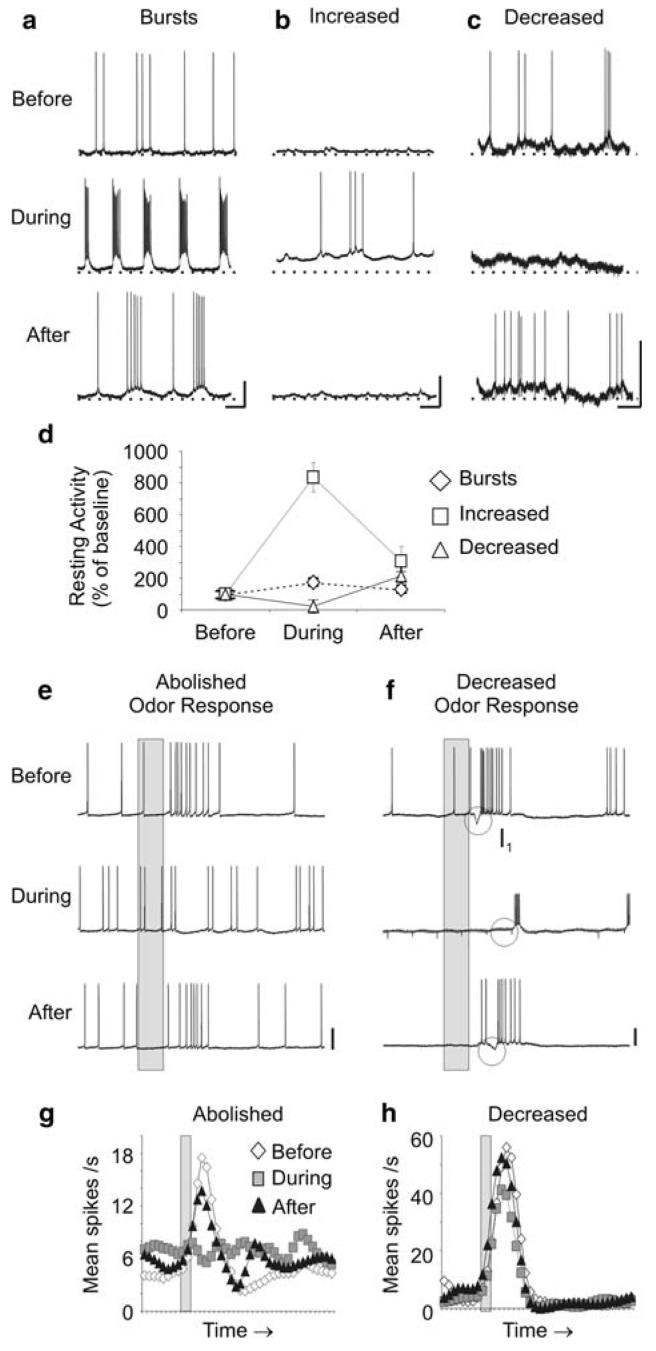Fig. 1.
Inhibition of NO synthesis modified the resting and odor-evoked activity of PNs.a-c, Representative traces are shown for three PNs before, during, and after treatment with either 500 μM 7NI or 15 mM L-NAME (see Table 1 for specific drug used). NOS inhibition resulted in: rhythmic bursting (a n = 10; PN5 shown), increased firing rates (b n = 3; PN12), and decreased firing rates (c n = 2; PN15) in different subsets of PNs. A rise in the resting membrane potential (RMP; dotted line, b, c n = 4) and a reduction in action potential amplitude (a n = 4) were also observed in some PNs. d The average resting firing activity was plotted as a percentage of baseline levels (± SEM) for each PN subset. e-f PN odor responses, measured by net number of spikes, (see Materials and methods) were also significantly abolished (e, g PN6; n = 6; repeated measures ANOVA df = 2; F = 15.6; P < 0.001; Tukey's post-hoc test: P < 0.05) or decreased (f, h PN1; n = 4; dF = 2; F = 6.86; P < 0.05; Tukey's post-hoc test P < 0.05) after NO synthesis inhibition. f The inhibitory potential (I1 circle) that precedes the bout of action potentials in the PN odor response was also missing in this PN. Calibration a-c 20 mV and 250 ms; e-h 20 mV and 200 ms (gray bar)

